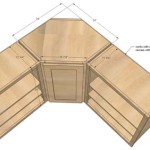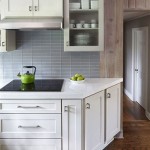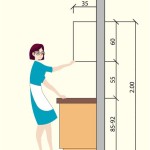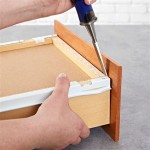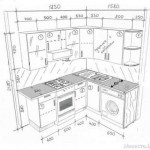How to Match Existing Kitchen Cabinets
Updating your kitchen without a complete overhaul can seem daunting, but matching existing cabinets is a great way to refresh the space while maintaining a cohesive look. Whether you're looking to replace countertops, backsplashes, or appliances, finding the right color and style to complement your existing cabinets is crucial for creating a harmonious kitchen. This article will guide you through the process of matching existing cabinets with various elements, providing practical tips and considerations for achieving a seamless and stylish update.
Matching Cabinet Colors
Matching cabinet colors is the foundation of any successful kitchen update. Understanding the nuances of your existing cabinet color is essential, as slight variations can significantly impact the final result. Start by examining the cabinet doors for signs of fading or changes in shade. Take note of the undertones (warm, cool, or neutral) and the overall depth of the color. You can use a color matching app or a paint chip to determine the closest match. When choosing new elements, consider the following:
- Countertops: Opt for a countertop material and color that complements the cabinet color. If your cabinets are light, a darker countertop can create nice contrast. Conversely, light countertops can brighten a space with dark cabinets. Consider using a countertop color with similar undertones to your cabinets for a cohesive look.
- Backsplash: The backsplash offers the opportunity to add visual interest and texture. Consider using a backsplash tile that complements the cabinet color or creates a subtle contrast. If your cabinets are a solid color, a patterned backsplash can add depth and dimension. Conversely, a solid backsplash can complement patterned cabinets.
- Appliances: Appliances come in various finishes that can either complement or clash with your cabinet color. Stainless steel appliances are a popular choice for their versatility, but they can appear too stark against light cabinets. Consider black stainless steel, white appliances, or even colored appliances to create a more cohesive look.
Matching Cabinet Styles
Matching cabinet styles is equally important as matching colors. Cabinets come in various styles, ranging from traditional to modern, with each style featuring distinct features that can affect the overall aesthetic. Examine the details of your existing cabinets, paying attention to the following:
- Door Style: Cabinet doors can be shaker, raised panel, beadboard, or flat panel, among others. The door style influences the overall look and feel of the cabinets. While you don't have to match the exact door style, choosing a similar style can maintain a cohesive look. For example, a shaker door could be paired with a raised panel door for a cohesive yet unique look.
- Hardware: Cabinet hardware encompasses handles, knobs, and hinges. The style of hardware can influence the overall aesthetic, with choices ranging from minimalist to ornate. Matching hardware can provide a consistent look, while contrasting hardware can create a more eclectic feel. For example, if your existing cabinets have simple handles, consider replacing them with decorative pulls for a more refined look.
- Materials: Cabinet materials can range from wood to laminate to painted finishes. Matching materials can create a unified look, but contrasting materials can also add visual interest. For instance, if you have wood cabinets, consider adding stainless steel accents, such as a backsplash or appliance.
Matching Cabinet Finishes
Matching cabinet finishes is a crucial aspect of creating a cohesive kitchen. The finish refers to the surface treatment of the cabinets, which can influence their appearance and durability. Consider the following factors:
- Paint Finish: Painted cabinets can have various finishes, such as matte, satin, semi-gloss, and gloss. Matte finishes provide a subtle sheen, while gloss finishes offer a high-shine effect. Matching the paint sheen can maintain a consistent look. If your existing cabinets have a matte finish, consider using a satin or semi-gloss finish for a subtle contrast.
- Wood Stain: Wood cabinets can be stained in a variety of colors and finishes. If you're replacing your cabinets with new ones, consider matching the existing stain color and finish. If you're adding new elements, such as countertops or backsplashes, choose materials that complement the stained wood.
- Laminate Finish: Laminate cabinets offer a durable and affordable finish. They can be found in various patterns and colors, allowing for flexibility. If you're replacing your cabinets with new ones, consider matching the existing laminate finish. If you're adding new elements, choose materials that complement the laminate.
By carefully considering these factors and finding the right balance between matching and contrasting elements, you can create a kitchen that seamlessly blends together your existing cabinets with new updates. This approach allows for customization and the ability to personalize your space while maintaining a cohesive and stylish look. Remember that there are no hard and fast rules, and the ultimate goal is to create a kitchen that you love and feel comfortable in.

Kitchen Confidential 7 Ways To Mix And Match Cabinet Colors

Mix Match Cabinets A How To Guide The Cabinet Doctors

How To Design Your Kitchen With Mismatched Cabinets Cabinetdoors Com

Can I Match My Existing Cabinets Dreammaker Bath Kitchen Blog

Mix And Match An All New Kitchen With The Same Old Cabinets Cherry Farmhouse

Kitchen Confidential 7 Ways To Mix And Match Cabinet Colors

Mix And Match Kitchen Cabinets Trend Alert The Lark

Can I Match My Existing Cabinets Dreammaker Bath Kitchen Blog

How To Design A Kitchen With Mismatched Cabinets Lovetoknow

How To Choose Kitchen Cabinet Colors Vigo Blog Bathroom And Shower Ideas
Related Posts

